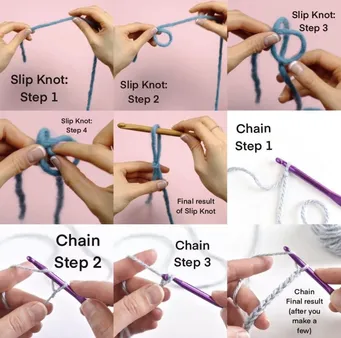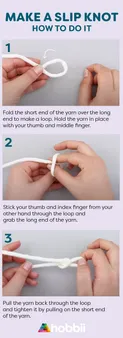Table of Contents
Have you ever watched a cricket match and wondered how those fielders pluck the ball out of thin air? They are called slips, and they are positioned strategically to catch the ball after it's been edged by the batsman. If you're eager to learn How to do a slip and enhance your cricket skills, you've come to the right place. Kizworld presents an exhaustive guide to slipping, providing you with invaluable insights, techniques, and tips to master this art.
How to do a slip: A Comprehensive Guide to Mastering the Art of Sliding
I. How to Do a Slip: A Step-by-Step Guide
How to Do a Slip: A Step-by-Step Guide
Positioning
In the realm of cricket, slips are strategically positioned fielders stationed close to the wicket-keeper. Their primary objective is to catch any edges or nicks off the bat that evade the wicket-keeper's grasp. Slips are typically placed in pairs, one on each side of the wicket-keeper, and their positioning is crucial in maximizing the chances of a successful catch.
- First Slip: Positioned directly behind the wicket-keeper, the first slip is responsible for catching nicks that go towards the off side.
- Second Slip: Located slightly wider than the first slip, the second slip covers the area between the first slip and gully.
- Third Slip: Positioned even wider than the second slip, the third slip covers the region between the second slip and point.
- Gully: Placed close to the first slip but positioned squarer on the off side, the gully fielder covers the area between the first slip and point.
- Point: Located at a wider angle than gully, the point fielder covers the area between gully and cover.
Catching Technique
Effective slip catching requires a combination of anticipation, quick reflexes, and proper technique. Here's a step-by-step guide to help you master the art of slip catching:
- Stance: Stand with your feet shoulder-width apart, knees slightly bent, and your weight evenly distributed. Keep your body relaxed and your eyes focused on the batsman.
- Hands: Position your hands in front of your chest, palms facing each other, and your thumbs touching. Keep your fingers spread out and relaxed.
- Reaction: As the ball approaches, react quickly by moving your hands in the direction of the ball. Keep your eyes on the ball and focus on catching it cleanly.
- Catching: When the ball enters your hands, squeeze your fingers together firmly to secure the catch. Bring the ball close to your body and tuck it safely into your chest.
- Follow Through: After catching the ball, follow through with your hands and bring it down to your waist. This helps to absorb the impact and prevent the ball from popping out.
Variations of the Slip
In addition to the standard slip positions, there are several variations that can be employed depending on the bowler's style, the batsman's technique, and the overall match situation.
- Close-in Slip: This variation involves positioning the slips closer to the wicket-keeper, creating a tighter catching cordon. It is often used against batsmen who tend to play close to their body.
- Leg Slip: In this variation, a fielder is positioned on the leg side of the wicket-keeper, covering the area between short leg and silly point. It is primarily used against batsmen who are strong on the leg side.
- Silly Point: This is a very close-in fielding position, placed directly in front of the batsman. It is typically used against batsmen who are known to play risky shots.
- Short Leg: Positioned close to the leg side of the wicket-keeper, the short leg fielder covers the area between silly point and square leg. It is a high-risk position, as the fielder is more likely to be hit by the ball.
Conclusion
Mastering the art of slip catching is a crucial skill for any aspiring cricketer. By understanding the positioning, technique, and variations of the slip, fielders can significantly improve their chances of taking catches and contributing to their team's success.
To further enhance your slip catching skills, consider the following tips:
- Practice regularly to develop your reflexes and hand-eye coordination.
- Study the batsman's technique and tendencies to anticipate where the ball might go.
- Communicate with your fellow fielders to ensure proper positioning and avoid collisions.
- Stay focused and alert throughout the match, as even a single catch can make a significant difference in the outcome of the game.
With dedication and practice, you can become a proficient slip fielder and a valuable asset to your cricket team.
Related posts: How to Do a Handstand, The Benefits of Gymnastics for Kids, The Best Gymnastics Equipment for Home Use
II. Mastering the Art of Slipping: Techniques and Tips
Mastering the Art of Slipping: Techniques and Tips
Positioning and Footwork
Effective slipping begins with proper positioning. Position yourself close to the batsman, with your feet shoulder-width apart and your knees slightly bent. Your weight should be evenly distributed on both feet, allowing you to react quickly to the ball's trajectory. As the ball approaches, take small, quick steps to adjust your position and maintain a balanced stance.
Related: How to Do a Handstand
Drill | Description |
Side Shuffle | Move laterally while maintaining a low stance. |
Forward and Back Shuffle | Move forward and backward while maintaining a low stance. |
Crossover Step | Step forward with one foot and then cross the other foot over it. |
Hand-Eye Coordination and Reaction Time
Slipping requires excellent hand-eye coordination and quick reaction time. Focus on the ball's trajectory and anticipate its path. As the ball approaches, bring your hands together in front of your body, palms facing each other. Keep your elbows close to your body and your wrists firm. When the ball is within reach, quickly extend your arms and hands to catch it.
Related: The Benefits of Gymnastics for Kids
- Tip: Practice catching balls of different sizes and speeds to improve your hand-eye coordination.
- Tip: Play reaction time games to improve your ability to respond quickly to visual stimuli.
Communication and Teamwork
Slipping effectively requires communication and teamwork among fielders. Communicate with your teammates to avoid collisions and ensure that the ball is caught cleanly. Use hand signals or verbal cues to indicate your intentions and coordinate your movements. Work together to create a solid defensive unit that prevents runs and dismisses batsmen.
Related: The Best Gymnastics Equipment for Home Use
III. Common Mistakes to Avoid When Slipping
Common Mistakes to Avoid When Slipping
Incorrect Positioning
One of the most common mistakes fielders make when attempting a slip is incorrect positioning. To execute a successful slip, the fielder must position themselves directly behind the batsman, with their feet shoulder-width apart and their knees slightly bent. This allows them to react quickly to the ball and move in the direction of the catch.
- Stand too close to the batsman.
- Stand too far away from the batsman.
- Stand at an angle to the batsman.
Lack of Concentration
Another common mistake is a lack of concentration. Slipping requires intense focus and anticipation, as the fielder must be ready to react to the ball at any moment. If the fielder is distracted or not paying attention, they are more likely to miss the catch.
- Not paying attention to the ball.
- Being distracted by other fielders or spectators.
- Thinking about something else.
Poor Hand-Eye Coordination
Good hand-eye coordination is essential for successful slipping. The fielder must be able to track the ball with their eyes and move their hands quickly and accurately to catch it. If the fielder has poor hand-eye coordination, they are more likely to drop the catch.
- Not being able to track the ball with their eyes.
- Not being able to move their hands quickly and accurately.
- Having difficulty judging the flight of the ball.
Incorrect Technique
Finally, incorrect technique can also lead to unsuccessful slipping. The fielder must use the correct technique to catch the ball cleanly and securely. This includes using the correct grip, positioning their hands correctly, and moving their body in the direction of the catch.
- Using an incorrect grip.
- Not positioning their hands correctly.
- Not moving their body in the direction of the catch.
IV. Safety Precautions for a Smooth and Injury-Free Slip
Safety Precautions for a Smooth and Injury-Free Slip
Proper Attire
- Wear comfortable and flexible clothing that allows for a full range of motion.
- Avoid loose or baggy clothing that could get caught on the cricket field.
- Wear shoes with good traction to prevent slipping on the grass.
Warm-Up Exercises
- Perform dynamic stretches to warm up your muscles and prepare them for the game.
- Focus on stretching your legs, back, and shoulders.
- Do some light jogging or running to get your heart rate up.
Proper Technique
- Learn the correct technique for slipping from a qualified coach or experienced player.
- Practice the technique regularly to improve your skills and coordination.
- Pay attention to your body position and balance while slipping.
Communication
- Communicate with your teammates to ensure that you are all aware of each other's positions and intentions.
- Call out clearly when you are about to slip so that your teammates can adjust their positions accordingly.
- Be aware of the position of the fielders and make sure you are not slipping into their path.
Stay Hydrated
- Drink plenty of water before, during, and after the game to stay hydrated.
- Dehydration can lead to fatigue and muscle cramps, which can increase the risk of injury.
- Avoid sugary drinks like soda and juice, as they can dehydrate you.
Listen to Your Body
- Pay attention to your body's signals and take breaks when you need them.
- If you are feeling tired or sore, it is important to rest and recover to prevent injury.
- Pushing yourself too hard can lead to burnout and increase the risk of injury.
V. Conclusion
In the captivating realm of cricket, the slip position stands as a testament to strategic fielding and exceptional catching skills. Mastering the art of slipping empowers fielders to transform crucial moments into wicket-taking opportunities. Through dedicated practice and an understanding of the game's dynamics, players can elevate their slipping abilities and contribute significantly to their team's success. As the sport continues to evolve, the slip position will undoubtedly remain a vital component of cricket's intricate tapestry.